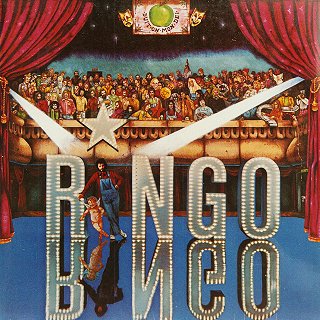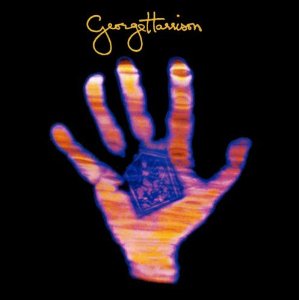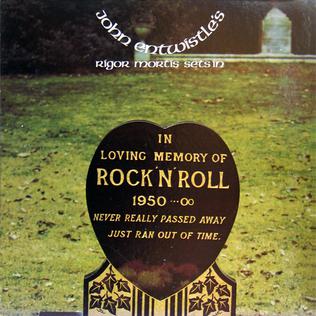
New wavers everywhere were hanging themselves by their skinny ties over the news that Elvis Costello made an entire album with pop schlockmeister Burt Bacharach. Elvis had never made a secret of his affection for the man, consummated with a collaboration for Alison Anders’ Brill Building homage
Grace Of My Heart. (The song in question, the emotional “God Give Me Strength”, took a similar role in the film as a far-reaching flop along the lines of “River Deep—Mountain High”.) Rather than leave it buried on a soundtrack, the new dynamic duo continued to collaborate by fax, and the song was given pole position as the closer on the resultant album.
It was suggested that Elvis and Burt would simply revisit songs from their own careers, but instead they came up with twelve new tracks that sounded like they came from either Burt’s ‘60s heyday or Elvis’ own catalog. Painted From Memory is lushly orchestrated, performed by stellar players, and does not include a single song that could be classified as fast, yet fans of EC’s slower, prettier songs will enjoy having their heartstrings tugged.
“In The Darkest Place” is a good way to start the album, with its late-night mood and just enough female backing vocals to set a standard for the rest. “Toledo” begins with those trademark Bacharach flugelhorns, and we wonder how Ohioans reacted to the slam in the choruses. (Actually, the city alluded to here is the one in Spain, a citadel not far from Escorial, which contains the staircase that inspired “13 Steps Lead Down” on Brutal Youth.) “I Still Have That Other Girl” is very pretty and infectious, if overwrought, and he nails the key change. “This House Is Empty Now” is familiar subject matter for an Elvis song, but the lyrics are really developed, both metaphorically and literally. Even the guitar solo is succinct and to the point, if his vibrato starts to get a little tiring. The saxophone at the start of “Tears At The Birthday Party”, which may or may not involve the same cake from “Alison”, leads into the more trying part of the album, wherein Elvis gets to flaunt his most pop tendencies, but listen to Jim Keltner’s drums and marvel at how he colors the song. “Such Unlikely Lovers” recalls Steely Dan at their most sterile, and one of the rare songs here that seems to celebrate the start of a love affair rather than ruing the end of one. The mention of violins and their appearance is very clever, and the song also features the most fitting line to sum up the project: “Can you believe it’s happening?”
“My Thief” is an absolute marvel, soaked in melancholy, and one of his best-ever vocals. There are three parts to the song, basically; the verse musically recalls mid-‘70s Tom Waits, the chorus breaks into another dimension, and the subdued coda, with its heartbreaking female response, reminds us of Joe Jackson’s more “serious” compositions. After that, “The Long Division”, which is very reminiscent of parts of Punch The Clock, vocally and arrangement-wise, is the least of the album, but it’s a momentary distraction before the run of top-notch tunes to come. Elvis’s love of Sinatra’s late-night concept albums shines on the haunting title track; this one is unique in that it’s arranged not by Burt but Johnny Mandel. “The Sweetest Punch” brings some well-appreciated tempo back to the proceedings, and we especially like how the bells echo the melody in the choruses. The haunting drama of “What’s Her Name Today?” is incredibly vivid, matched by the emotional dynamics—a truly remarkable song. And again, the inclusion of “God Give Me Strength”, in all its pleading and emotion, works as an excellent epilogue to remind us how it all started.
For those who gave it a chance, Painted From Memory quickly overcame the danger of being truly awful. This is well-crafted pop worthy of the Great American Songbook, with just the right amount of syrup to break your heart. If you put any of these songs onto any of his other, punkier albums, they would still make perfect sense. We could almost forgive the hat.
The album was a surprise success, and likely led to his hit cover of “She” for the Notting Hill soundtrack a year later. By that time, jazz guitarist Bill Frisell released The Sweetest Punch, which presented instrumental arrangements of the songs on the album, plus Elvis singing on “Toledo”, Cassandra Wilson on “Painted From Memory”, and the pair duetting on “I Still Have That Other Girl”. The packaging even included full lyrics for every song, which were not included with the main album.
 The album’s 25th anniversary was celebrated by expanded packages announced prior to but released shortly after Bacharach’s death in 2023. The two-disc version of The Songs Of Bacharach & Costello offered the remastered album plus Taken From Life, something of a continuation of the concept, including additional songs designed for a possible stage version. Two alternate versions were from The Sweetest Punch and four further collaborations were repeated from 2018’s Look Now, plus “Everybody’s Playing House” had been hidden on a 2019 Record Store Day EP. Of the rest, Elvis sings three; the pomped-up and pompous “You Can Have Her” doesn’t really work outside of staging, “Taken From Life” is a nice try for an “answer” song, with an uncomfortable mental image in the chorus, and the mournful “Look Up Again” comes closest to the standard of the original album. Audra Mae, who we’re sure we’ve heard on TV commercials, contributes positively stunning readings of “In The Darkest Place” and “What’s Her Name Today?” that possibly best the originals, plus the otherwise new, mesmerizing “I Looked Away”. Jenni Muldaur does the intentionally shocking and profane “Shameless”, which sadly sounds like Gwen Stefani trying to sing like angry Elvis, and redoes “Stripping Paper” from Look Now. Burt himself sings “Lie Back & Think Of England” from a proposed—and mercifully not pursued—Austin Powers musical.
The album’s 25th anniversary was celebrated by expanded packages announced prior to but released shortly after Bacharach’s death in 2023. The two-disc version of The Songs Of Bacharach & Costello offered the remastered album plus Taken From Life, something of a continuation of the concept, including additional songs designed for a possible stage version. Two alternate versions were from The Sweetest Punch and four further collaborations were repeated from 2018’s Look Now, plus “Everybody’s Playing House” had been hidden on a 2019 Record Store Day EP. Of the rest, Elvis sings three; the pomped-up and pompous “You Can Have Her” doesn’t really work outside of staging, “Taken From Life” is a nice try for an “answer” song, with an uncomfortable mental image in the chorus, and the mournful “Look Up Again” comes closest to the standard of the original album. Audra Mae, who we’re sure we’ve heard on TV commercials, contributes positively stunning readings of “In The Darkest Place” and “What’s Her Name Today?” that possibly best the originals, plus the otherwise new, mesmerizing “I Looked Away”. Jenni Muldaur does the intentionally shocking and profane “Shameless”, which sadly sounds like Gwen Stefani trying to sing like angry Elvis, and redoes “Stripping Paper” from Look Now. Burt himself sings “Lie Back & Think Of England” from a proposed—and mercifully not pursued—Austin Powers musical.
A deluxe edition added two more discs. Because It’s A Lonely World consisted mostly of live versions of seven songs from the album (plus “I’ll Never Fall In Love Again”), exquisitely performed by Elvis and Steve Nieve on piano, sometimes alone and sometimes with an orchestra, along with “This House Is Empty Now” with Burt on Conan O’Brien’s show. (Some but not all of these had already appeared on an Australian “tour edition” expansion of the album, which included other tracks not included here.) The Costello Sings Bacharach And David disc collected three covers that had already appeared on Costello albums or collections, plus “I’ll Never Fall In Love Again” from an Austin Powers soundtrack, and four other songs performed with Burt on a tour in support of the album: “Make It Easy On Yourself”, “My Little Red Book”, “Anyone Who Had A Heart”, and another “I Just Don’t Know What To Do With Myself”.
Not only could these two discs have been combined into one, but the package also had two LPs comprising Painted From Memory and six selections from Taken From Life, driving the cost way out of proportion. All the repeated recordings scattered throughout added insult to injury.
Elvis Costello With Burt Bacharach Painted From Memory (1998)—4
Elvis Costello With Burt Bacharach The Songs Of Bacharach & Costello (2023)—3½
 Though it’s called the soundtrack for the film, The Song Remains The Same isn’t. There’s an entire website dedicated to picking apart all the edits on the album and whether or not they match the ones in the movie; plus there are songs on the album that aren’t in the film and vice versa. As a representation of live Zeppelin—and the only band-sanctioned live release for over two decades—it’s just okay, and not great.
Though it’s called the soundtrack for the film, The Song Remains The Same isn’t. There’s an entire website dedicated to picking apart all the edits on the album and whether or not they match the ones in the movie; plus there are songs on the album that aren’t in the film and vice versa. As a representation of live Zeppelin—and the only band-sanctioned live release for over two decades—it’s just okay, and not great. 









:format(jpeg):mode_rgb():quality(90)/discogs-images/R-1305521-1208497867.jpeg.jpg)




